#barbucomedie
Text

Belt Buckle from Maria Ponsee, Austria dated between 500 - 800 CE on display at the Kunsthistorisches Museum in Vienna, Austria
With almost 100 graves, Maria Ponsee is the largest Langobardian burial site in Austria. It was excavated in 1965 and 1966 by the Federal Monuments Office and is one of the few cemeteries from this period to have been completely examined. Three ethnic groups buried their deceased here: Langobards, Thuringii and Romani or Suebi. What remains in these graves is what was left by grave robbers over the centuries.
Photographs taken by myself 2022
#art#archaeology#history#fashion#austria#austrian#migration period#kunsthistorisches museum#vienna#barbucomedie
227 notes
·
View notes
Text
barbucomedie replied to your post: Men are dumb but at least I looked cute today
Men are dumb, sorry about us, but you are rocking it today :)
Thank you! Not all men are dumb, but the dumb ones have decided to fall into my gravitational field today. Luckily most of them will burn up on entry to the atmosphere and will only make a vague dent in my mood :)
5 notes
·
View notes
Text

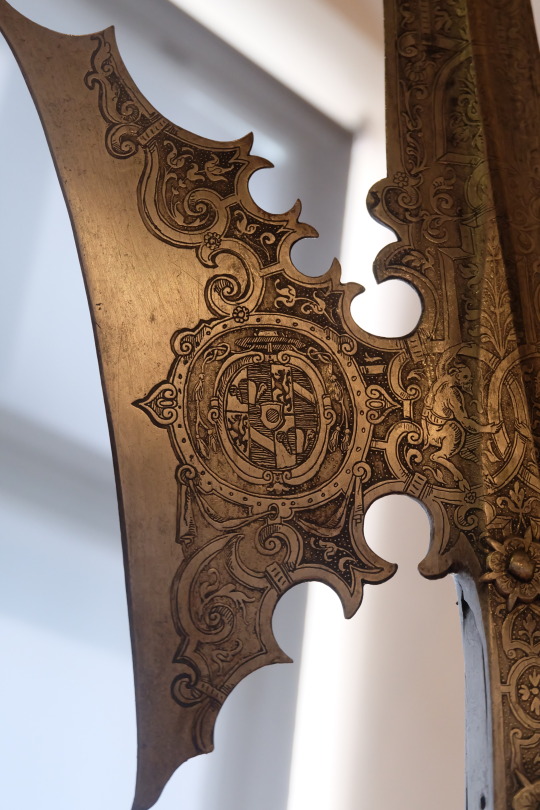
Halberd of the Life Guard of Archbishop Wolf Dietrich from Salzburg, Austria dated to 1589 on display at the Salzburg Museum in Salzburg, Austria
Photographs taken by myself 2022
#military history#16th century#renaissance#holy roman empire#hapsburgs#art#austria#austrian#salzburg museum#salzburg#barbucomedie
163 notes
·
View notes
Text
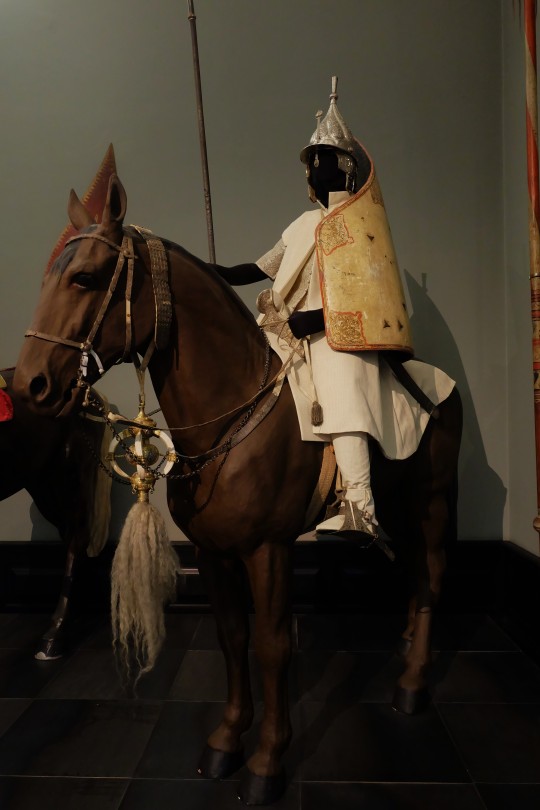
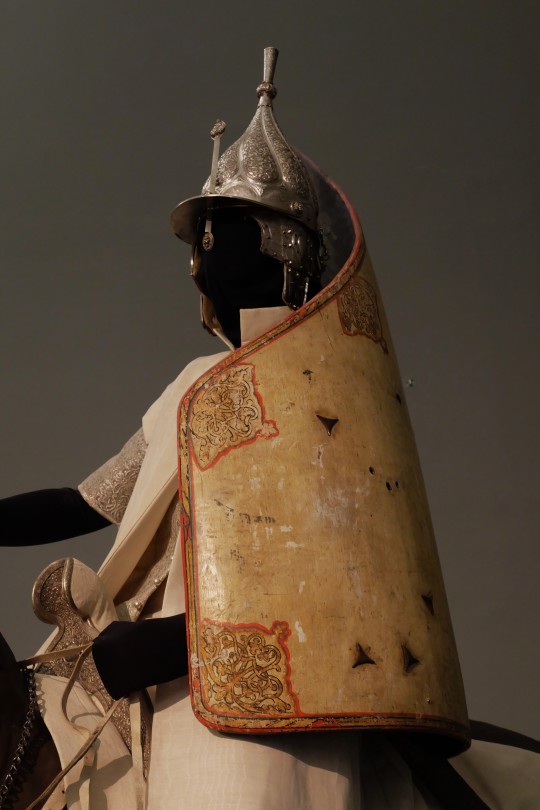
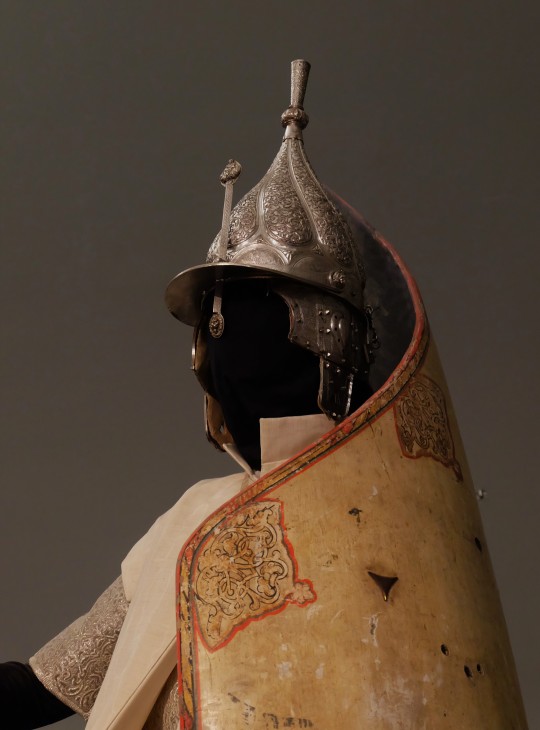
Light Cavalry Armour and Weapons from Wallachia, Romania dated to 1549 on display at the Weltmuseum in Vienna, Austria
Photographs taken by myself 2022
#armour#armor#uniform#fashion#art#romanian#romania#16th century#renaissance#cavalry#military history#weltmuseum#vienna#barbucomedie
694 notes
·
View notes
Text


Royal Navy Issue Boarding Pistol from the British Empire dated between 1791 - 1795 on display at the Vancouver Maritime Museum in Canada
Explorers like Captain George Vancouver, who charted and claimed what is now British Columbia in Canada, were also officers in the Royal Navy. The ships and crews were armed and were ready and trained to use violence against Native peoples or rival empires.
Pistols with long barrels, like this one, were commonly used by seamen were as ones with shorter barrels were issued to officers officers. These pistols were cheaper than the ones produced for the army and were mainly use for close combat with a heavy handle which could be used as a bludgeoning weapon.
Photographs taken by myself 2023
#naval history#18th century#british empire#canada#canadian#georgian#hanoverian#age of sail#maritime museum#vancouver#barbucomedie
209 notes
·
View notes
Text

Tairona Anthropomorphic Gold Pendant from Columbia dated between 800 - 1500 on display at the Museum of the Americas in Madrid, Spain
Photographs taken by myself 2019
#art#jewelry#history#archaeology#fashion#tairona#columbian#columbia#medieval#museum of the americas#madrid#barbucomedie
154 notes
·
View notes
Text

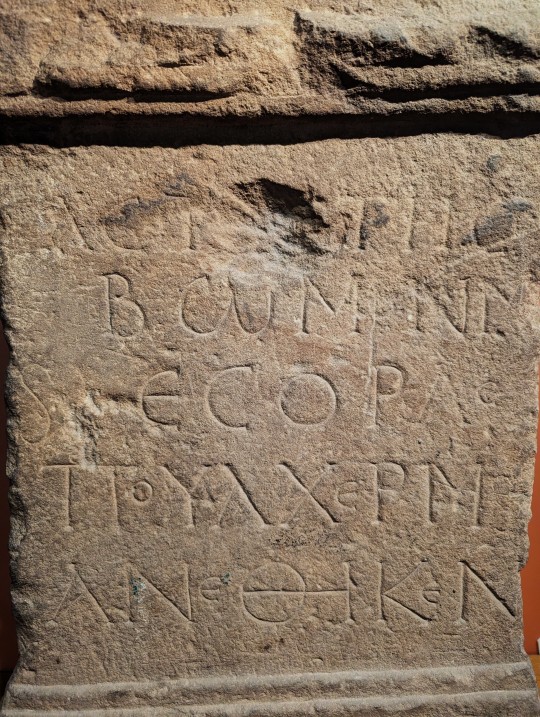
Altar to Astarte from Corbridge, England dated to the 3rd Century CE on display at the Tullie House Museum and Art Gallery in Carlisle, England
This altar was set up by a man called Pulcher who had his inscription writted in Greek. It is dedicate to an ancient Near Eastern goddess called Astarte, who has been worshipped since prehistory. A patera, or pan, is depicted on one side of the altar and a jog on the other. Both these items would have been used during religious ceremonies.
Photographs taken by myself 2023
#art#archaeology#history#roman empire#england#english#ancient#tullie house museum and art gallery#carlisle#barbucomedie
88 notes
·
View notes
Text

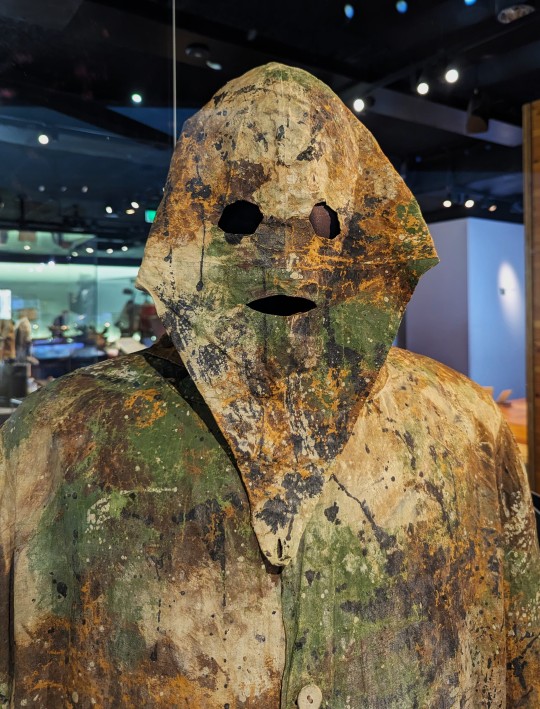
Sniper Robe from the British Empire dated to around 1916 on display at the Imperial War Museum in London, England
Many British Army snipers were trained by former Highland gamekeepers and deer stalkers of the Lovat Scouts, who gave extensive guidance on sniper's field service attire based on their extensive professional skills in improvising personal camouflage and their practical experience of effective concealment. As a result a wide variety of camouflage clothing schemes were adopted on the Western Front, either improvised or officially produced; these included mittens, gaiters and robes.
Photographs taken by myself 2023
#uniform#fashion#20th century#military history#british empire#first world war#imperial war museum#london#barbucomedie
114 notes
·
View notes
Text
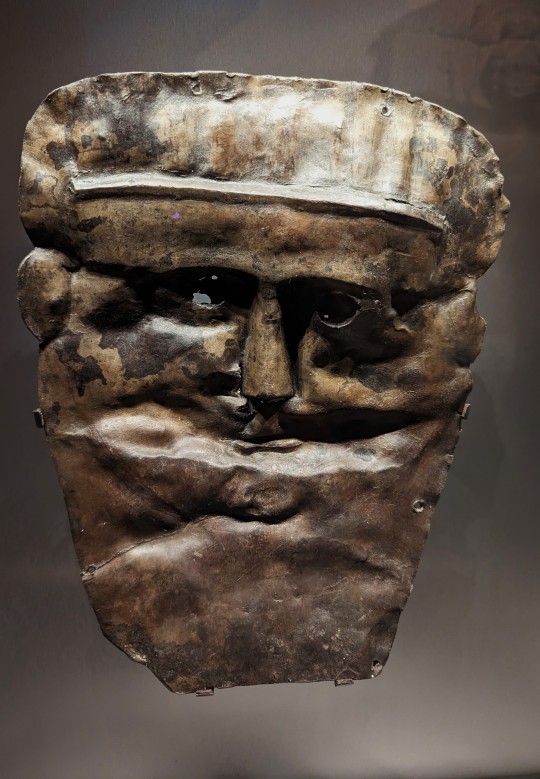
Religious Mask from Bath, England dated between the 1st and 4th Centuries on display at the Roman Baths Museum in Bath, England
Photographs taken by myself 2023
#art#archaeology#history#fashion#roman empire#england#english#ancient#iron age#roman baths museum#bath#barbucomedie
114 notes
·
View notes
Text

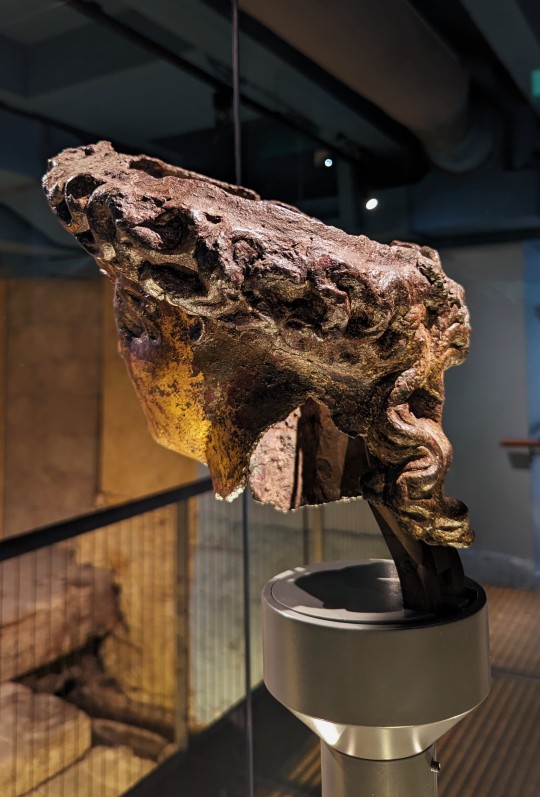
Bronze Head of Sulis Minerva from the Bath, England dated to the Late 1st Century on display at the Roman Baths Museum in Bath, England
This bronze head was discovered in 1727 and was an early indication that the Roman site at Bath was not a typical settlement. Gilt bronze sculptures are rare finds from Roman Britain as only two other fragments are known.
The head is probably from the cult statue of the goddess which would have stood within her Temple beside the Sacred Spring. From there she may have looked out across the Temple courtyard to the site of the great altar, the site of sacrifice, which stood at the heart of that sacred space. The statue may well be an original object from the foundation of the site in the later first century CE, which means that it was probably well over 300 years old when it met its demise.
The head is slightly larger than life size, suggesting that the original statue was an imposing sight. Hidden in the hair line are several small holes which once held rivets that fixed her tall Corinthian helmet to her head.
Examination of the head has revealed that it has six layers of gilding. The first two use a technique known as fire gilding whilst the four later layers are applied as gold leaf. The head has a number of imperfections. There is corrosion which has affected it in parts where it lay in the ground for over a thousand years. There is also a strange rectangular cut beneath the chin. It is thought that this may result from a flaw in the original casting process in which a bubble on the surface may have been cut out and filled with an inserted plate. When gilded over it would not have been visible. This plate has subsequently fallen out as a result of corrosion whilst in the ground.
Photographs taken by myself 2023
#art#archaeology#history#roman empire#english#england#ancient#iron age#roman baths museum#bath#barbucomedie
103 notes
·
View notes
Text

Alabastron (Perfume Bottle) from Athens, Greece dated around 470 BCE on display in the British Museum in London, England
This bottle shows an armed Amazon wearing armour and trousers. The Amazons were a group of warrior women whom the Greeks believed to live North of the Black Sea. Unlike Greek women, they are often represented as wearing trousers, a long sleeved top, and a cuirass like the one here. The Amazon on this bottle also carries a shield with an attached patterned cloth and a quiver.
Photographs taken by myself 2020
#armour#armor#art#archaeology#military history#ancient#greece#greek#fashion#british museum#london#barbucomedie
517 notes
·
View notes
Text
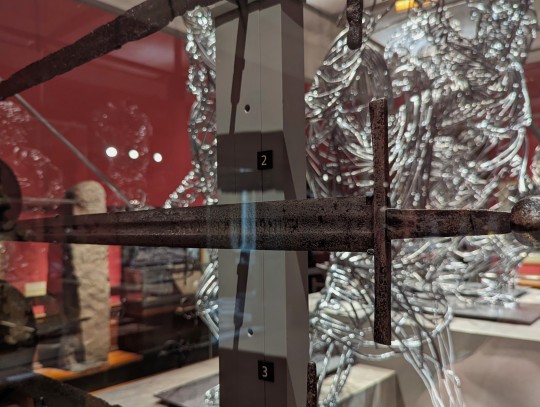


Arming Sword from Germany dated to around 1150 on display at the Kelvingrove Art Gallery and Museum in Glasgow, Scotland
This sword bears the inscriptions: '+ INMNII INP INN +' on one side, on the other, '+INI NNI NNB NN+'.
Photographs taken by myself 2023
#sword#art#archaeology#medieval#12th century#german#germany#military history#kelvingrove art gallery and museum#glasgow#barbucomedie
123 notes
·
View notes
Text

Silver Coin from Winchester, England dated between 875 - 885 on display at Winchester Catherdral, England
This coin was excavated in the Cathedral Close and bears the head of Alfred the Great with the inscription +ÆLFREDREXSA+ which translates to Alfred, King of the Saxons. From 871 to 886 Alfred was King of the West Saxons, the Kingdom of Wessex. During this time of Alfred's reign the Vikings under Guthrum, later King of East Anglia (879 - 890?), Ivar the Boneless, Halfdan Ragnarson, Ubba and Bagsecg formed the Great Heathen Army and invaded much of England.
Photographs taken by myself 2023
#art#archaeology#history#england#english#medieval#9th century#winchester cathedral#museum#winchester#barbucomedie
114 notes
·
View notes
Text
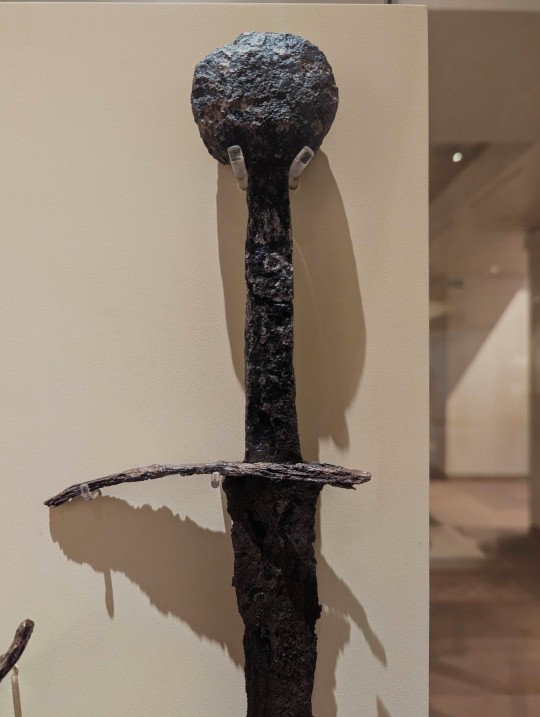

Sword Hilt and Portion of Blade Excavated from the Isle of Man dated between the 13th-14th Centuries on display at the National Museum of Scotland in Edinburgh Scotland
Photographs taken by myself 2023
#sword#medieval#military history#archaeology#art#scotland#scottish#national museum of scotland#edinburgh#barbucomedie
199 notes
·
View notes
Text

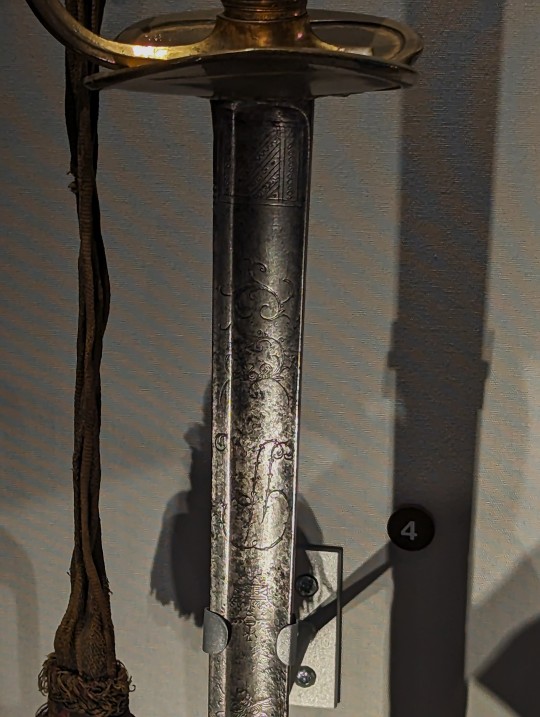

Infantry Officer's Small Sword from Germany dated to 1796 on display at the Cumbria Museum of Military Life in Carlise, England
Until 1786 there was little regulation on what swords officers in the British army carried. After that they introduced regular patterns for regiments and officers to use. Small swords like this were more a symbol of authority and rank on the battlefield and on parade unlike cavalry swords which were more in use in combat.
Photographs taken by myself 2023
#sword#art#british empire#england#english#military history#georgian#hanoverian#18th century#cumbria museum of military life#carlisle#barbucomedie
135 notes
·
View notes
Text
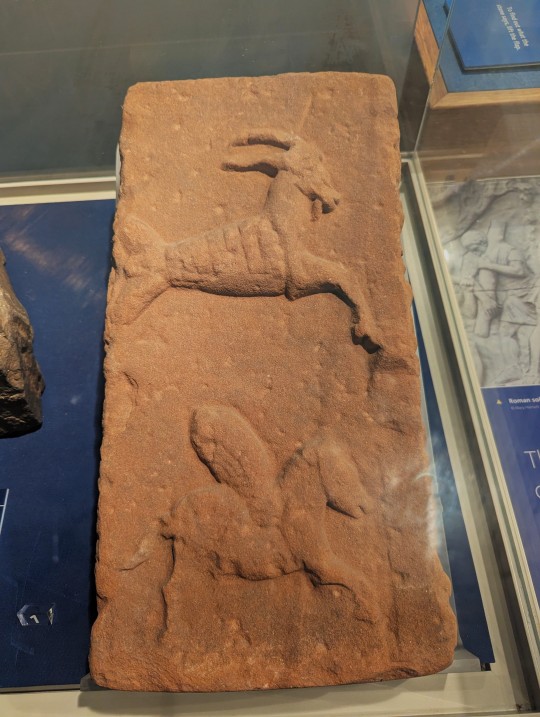
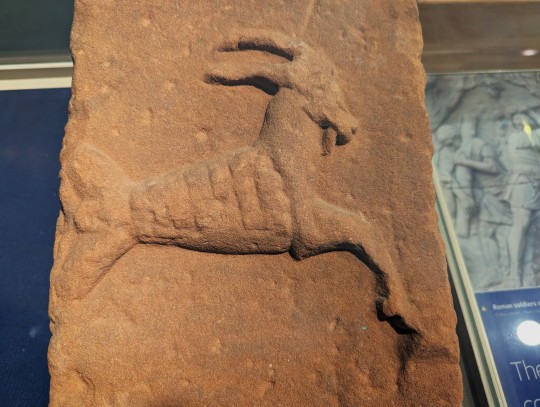
Commemoration Slab from Castlesteads, England dated to the 2nd Century CE on display at the Tullie House Museum and Art Gallery in Carlisle, England
The different Roman legions each had a series of emblems. Besides the eagle, they each had additional badges which they used when they wanted to mark soemthing that they had built or be associated with.
The Second Legion Augusta was raised during the civil war that brought the Emperor Augustus to power. This event was commemorated by adopting Augustus' emblem, a capricorn. This is often called a "Sea Goat" and is a mythical creature that had the head and body of a goat and tail of a fish. In addition they also used the winged horse, a pegasus as an emblem. Both these badges have been found on this building stone at Castlesteads Roman Fort on Hadrian's Wall.
Photographs taken by myself 2023
#art#archaeology#military history#roman empire#england#english#ancient#iron age#tullie house museum and art gallery#carlisle#barbucomedie
100 notes
·
View notes